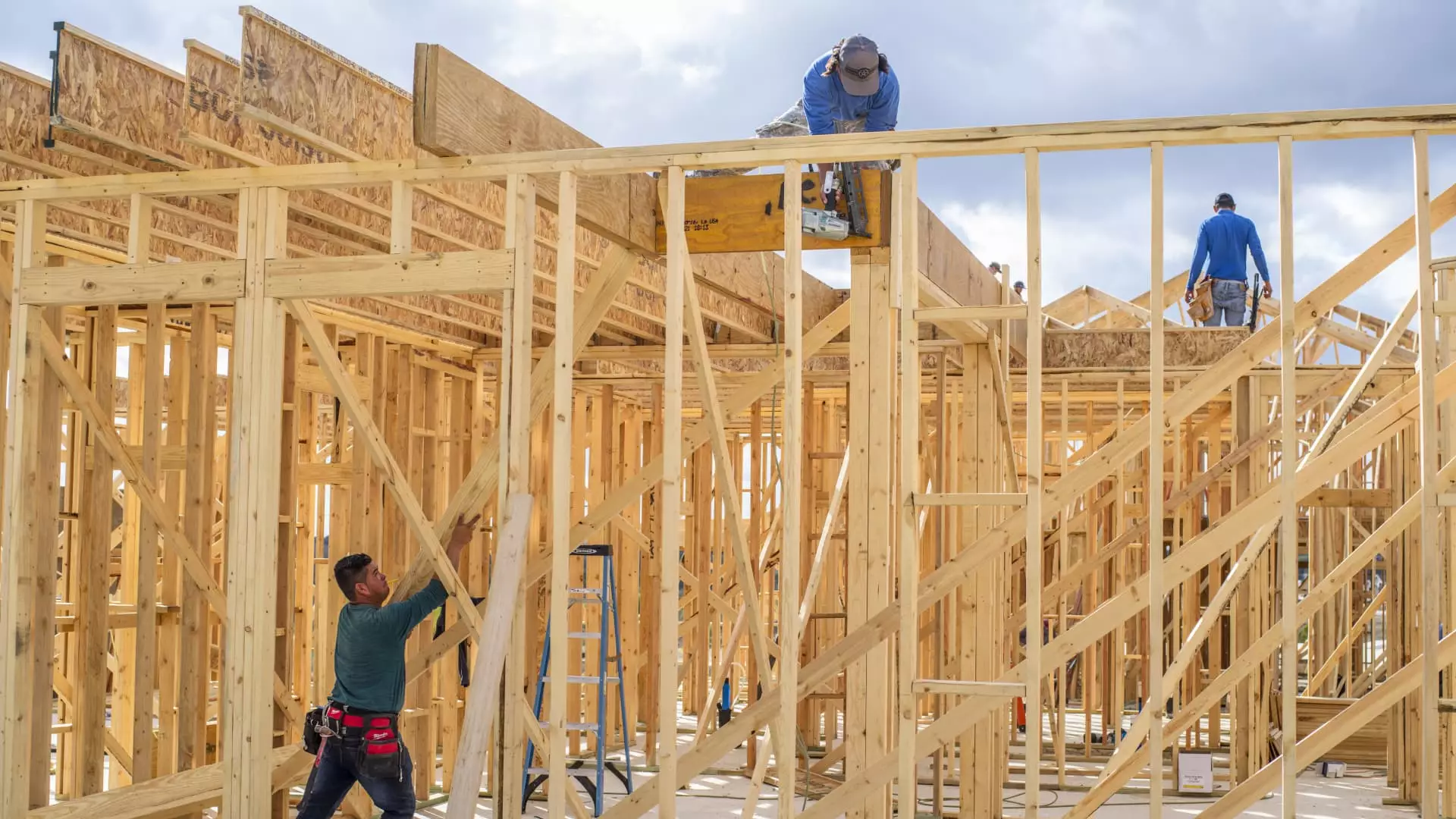As the landscape of single-family home construction undergoes a significant transformation, a recent survey by the National Association of Home Builders (NAHB) reveals a troubling decline in sentiment among homebuilders. The February Housing Market Index (HMI) showed a notable drop of 5 points, settling at a concerning 42. This marks the lowest level of confidence observed in the past five months and underscores the complex challenges faced by the housing sector. The implications are profound, not only for builders but for potential homebuyers and the broader economy as well.
The Housing Market Index serves as a pivotal barometer of homebuilder confidence, gauging perceptions across various components—including current sales conditions, buyer traffic, and sales expectations. With an index reading falling below the neutral point of 50, it’s evident that the mood among builders is bleak. The current sales conditions dipped to 46, while buyer traffic plummeted to 29. The most alarming statistic might be the sales expectations for the next six months, which dropped a striking 13 points, reflecting a sense of impending further challenges.
This decline raises critical questions about the factors influencing builder sentiment. While there has been talk of potential regulatory reforms and pro-development policies, the backdrop of economic uncertainty, particularly concerning tariffs and rising material costs, looms large. Homebuilders had recently harbored hopes that declining mortgage rates and favorable policy directions could invigorate the market. Instead, they now find themselves grappling with a downturn sparked by external economic pressures.
One of the primary catalysts driving down builder confidence appears to be the anticipated effects of tariffs on materials essential for construction. Homebuilders have cited that a substantial percentage of their supplies—32% of appliances and 30% of softwood lumber—are sourced internationally. The NAHB’s chief economist, Robert Dietz, emphasized that uncertainty surrounding tariffs has exacerbated concerns over cost implications, potentially leading to higher pricing for consumers.
Moreover, while tariffs from previous administrations were initially stalled, the specter of increased costs has continued to affect builders’ operational strategies. With the burden of elevated material costs, builders are facing a tricky balancing act: they must maintain affordability for buyers without sacrificing profit margins.
In addition to tariff concerns, elevated mortgage rates present further challenges. The average rate on the 30-year fixed mortgage has hovered above 7% during the early months of the year, a substantial rise from previous levels. This increase is particularly concerning for potential buyers facing affordability hurdles, as home prices have escalated compared to the previous year. The combination of high prices and mortgage rates creates an increasingly narrow window of opportunity for many first-time homebuyers.
Trends in buyer demand show a worrying shift. Evidence from recent earnings reports highlights a notable pullback in buyer activity, suggesting that many potential purchasers remain sidelined, discouraged by the escalating costs of homeownership. Even major builders like PulteGroup have reported that the impact of higher rates on demand has been palpable, revealing the delicate interplay between lender actions and market responses.
As the spring selling season approaches—a critical period for home sales—the recent drop in builder sentiment could signal diminished inventory levels in the housing market. A significant reduction in supply could exacerbate existing affordability challenges, leading to a less favorable environment for both builders and buyers alike. The NAHB noted a decline in the percentage of builders opting to reduce home prices, alongside a decrease in sales incentives. This downward trend indicates that traditional strategies to stimulate sales may be losing effectiveness as the market dynamics shift.
The current state of the housing market is characterized by uncertainty and caution among homebuilders. With external economic pressures compounded by higher costs and reduced buyer demand, the outlook for the upcoming months remains precarious. As builders navigate this increasingly challenging landscape, it will be crucial to monitor how these trends impact both the market and the broader economy. The hope remains that strategic policy changes and favorable economic conditions may help to stabilize the sector in the long run.

